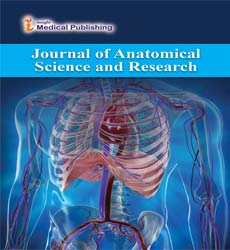Abstract
Detailed Musculoskeletal Study of a Fetus with Trisomy-18 (Edwards Syndrome) with Langer’s Axillary Arch, and Comparison with Other Cases of Human Congenital Malformations
Background: Trisomy-18 is the second most prevalent autosomal aneuploidy after trisomy-21. Trisomy-18 individuals present with major multisystem alternations including craniofacial and musculoskeletal anomalies. The study of trisomic cases provides us with magnified clues to the complex history of individual muscles during development and also allows us to record the development of variable human phenotypes more accurately.
Methods and Findings: In this study, we describe in detail the musculoskeletal system of a premature female with trisomy-18 and compare it with previous studies of trisomies-13, -18 and -21 as well as karyotypically normal individuals. This study is a part of a long-term project aimed at contributing to the renaissance of comparative anatomy in general and comparative myology in particular and to a better understanding of both “normal” and abnormal development and its links to evolution, and birth defects. Five head features suggested developmental delay, supporting the idea that delayed development of the skeletal muscular system may be a crucial diagnostic feature for all human aneuploidy syndromes. More anomalies were found in the muscles of the upper and lower limbs than in the muscles of the head. These included the fusion of some muscles and the presence of supernumerary muscles such as the so-called "Langer’s axillary arch". In general, there is uniformity between the anomalies observed in the dissected fetus and in human fetuses with other trisomies. This supports Alberch’s ill-named “logic of monsters” theory because one finds the same malformations occurring in different syndromes, and moreover often mirroring phenotypes often seen in the normal configuration of other organisms. Furthermore, there are other clear cases of patterns found in human congenital malformations.
Conclusions: As noted above, the upper limbs often have more muscular defects than the lower limbs, and many of human congenital malformations in human trisomies are related with developmental delay. The study of trisomy thus provides us with magnified clues to understand the evolution, development, and pathology of human anatomical structures, and to discuss broader subjects with major implications for both evolutionary and developmental biology and for medicine.
Author(s): Malak A. Alghamdi, Rui Diogo, Raquel Izquierdo, Francisco F. Pastor, Janine M. Ziermann, et al.
Abstract | Full-Text | PDF
Share This Article
Google Scholar citation report
Citations : 16
Journal of Anatomical Science and Research received 16 citations as per Google Scholar report
Abstracted/Indexed in
- Google Scholar
Open Access Journals
- Aquaculture & Veterinary Science
- Chemistry & Chemical Sciences
- Clinical Sciences
- Engineering
- General Science
- Genetics & Molecular Biology
- Health Care & Nursing
- Immunology & Microbiology
- Materials Science
- Mathematics & Physics
- Medical Sciences
- Neurology & Psychiatry
- Oncology & Cancer Science
- Pharmaceutical Sciences

